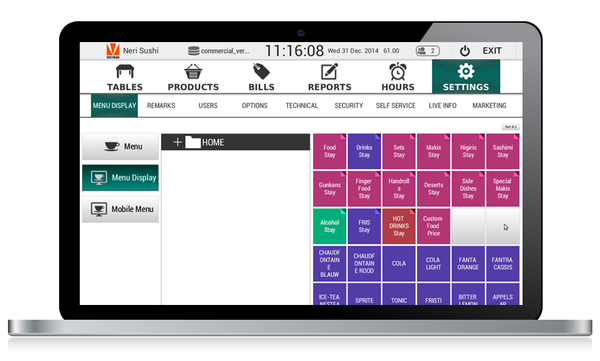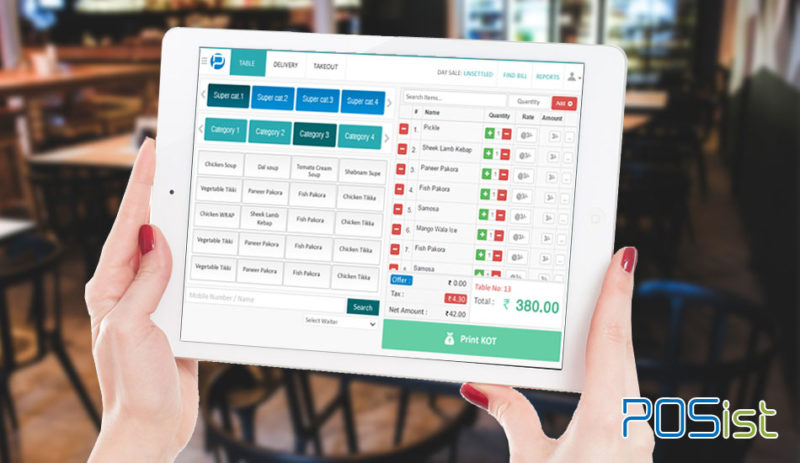Best practices to connect your Restaurant POS Software solution with e-commerce
Wiki Article
Just How POS System Functions: A Comprehensive Guide for Entrpreneurs
A POS system acts as an important tool for modern-day organizations, incorporating numerous elements to improve operations. It encompasses equipment like barcode scanners and software program up for sale monitoring. This system not only refines purchases however also takes care of stock and assesses customer behavior. Understanding its functionality can considerably affect a service's performance and decision-making. What are the crucial elements that add to this effectiveness? Checking out these components uses valuable insights.Understanding the Elements of a POS System
A Point of Sale (POS) system is made up of a number of vital parts that collaborate to help with deals and take care of company operations. At its core, the hardware consists of gadgets such as a money register, barcode scanner, receipt printer, and repayment terminal, all necessary for processing sales (Restaurant POS Software). The software application part manages inventory, sales tracking, and customer information, giving useful understandings for service decisions.Additionally, data sources keep deal documents and customer info, making sure information honesty and safety and security. Network connectivity enables real-time updates and access to cloud-based solutions, enhancing functional efficiency. User interfaces, developed for simplicity of usage, enable personnel to navigate the system promptly, decreasing training time. With each other, these parts develop a natural system that streamlines the sales procedure, enhances customer support, and aids in efficient administration of organization resources. Understanding these elements is vital for organization proprietors looking for to maximize their POS systemsHow Sales Deals Are Refined
When a customer makes a decision to buy, the sales transaction launches a collection of systematic actions within the POS system. Initially, the cashier inputs the items being purchased, which are scanned with a barcode visitor or manually entered. This action obtains product details, including pricing and appropriate tax obligations, from the system's database.Next, the client exists with the overall amount due. The POS system then processes the settlement, whether with money, bank card, or mobile payment methods. For digital payments, the POS firmly connects with repayment cpus to accredit and confirm the transaction.Once the payment is validated, the system generates a receipt, which can be printed or sent out digitally. This invoice works as proof of purchase for the client. The transaction information is taped in the system, making certain accurate sales records and economic tracking for the business.Supply Management and Monitoring
Efficient inventory administration and monitoring are crucial elements of a POS system, as they guarantee that companies keep optimal stock degrees and lessen discrepancies. A durable POS system permits real-time supply updates, reflecting sales and returns immediately. This allows entrepreneur to check supply degrees accurately, ensuring that preferred products are readily available while preventing overstocking of much less popular products.Additionally, progressed POS systems supply functions such as automatic supply informs and reorder pointers, enhancing the procurement procedure. Barcoding and RFID innovation enhance precision in tracking inventory activity, minimizing human mistake. Substantial coverage tools supply insights into stock turnover prices, helping services make useful content notified choices about buying and item offerings. Ultimately, reliable supply management via a POS system not just improves operational effectiveness yet also enhances customer satisfaction by guaranteeing product availability.
Evaluating Consumer Data and Insights
Customer data analysis works as an effective device for organizations using a POS system. By gathering and checking out transaction data, companies can reveal important understandings about consumer habits and preferences. This evaluation enables them to recognize buying trends, peak buying times, and popular items, therefore notifying inventory choices and advertising and marketing strategies.Additionally, organizations can sector their customer base, permitting individualized marketing efforts that provide to specific demographics or buying practices. Understanding consumer loyalty patterns also aids in creating targeted promos and incentives programs.The data gleaned from a read what he said POS system can additionally disclose insights right into customer feedback, making it possible for businesses to make educated decisions regarding item offerings and service improvements. Inevitably, leveraging client data effectively can enhance the total purchasing experience, foster consumer contentment, and drive income growth.
Benefits of Applying a POS System
Carrying out a POS system provides numerous benefits that can considerably boost company operations. To start with, it simplifies transaction procedures, minimizing delay times and boosting customer contentment. By automating sales processes, services can reduce human mistake and warranty exact record-keeping. Furthermore, a POS system provides valuable information analytics, enabling owners to track sales fads and stock levels in real-time. This insight sustains informed decision-making, helping to enhance supply monitoring and advertising and marketing strategies.Moreover, lots of POS systems integrate with various other organization tools, such as audit software program, simplifying financial management. Improved employee management attributes, such as tracking hours and efficiency, more add to functional efficiency.Lastly, the application of a POS system can cause you could try here raised income with improved client experiences and critical insights, ultimately fostering company development and sustainability.
Regularly Asked Questions
What Types of Services Can Benefit From a POS System?

Exactly how Much Does a POS System Normally Price?
The expense of a POS system generally ranges from a couple of hundred to numerous thousand dollars, depending upon functions, hardware, and software program - Restaurant POS Software. Organizations need to take into consideration continuous charges for maintenance, assistance, and deal handling when budgeting
Can I Incorporate a POS System With Existing Software?
Integrating a POS system with existing software application is commonly practical. Numerous systems offer APIs or integrated compatibility attributes, permitting services to simplify operations and enhance capability by linking numerous software application applications effectively.What Training Is Required for Personnel to Utilize a POS System?
Educating for team to utilize a POS system normally includes understanding software program capabilities, refining deals, managing supply, and dealing with client interactions - Restaurant POS Software. Practical demos and hands-on practice sessions boost effectiveness and self-confidence being used the system effectivelyWhat Happens if the Internet Drops While Using a POS System?
If the internet drops during POS system usage, deals might be interrupted. Several systems supply offline abilities, permitting standard operations to continue, but complete performance, consisting of real-time supply updates, will certainly be limited.Report this wiki page